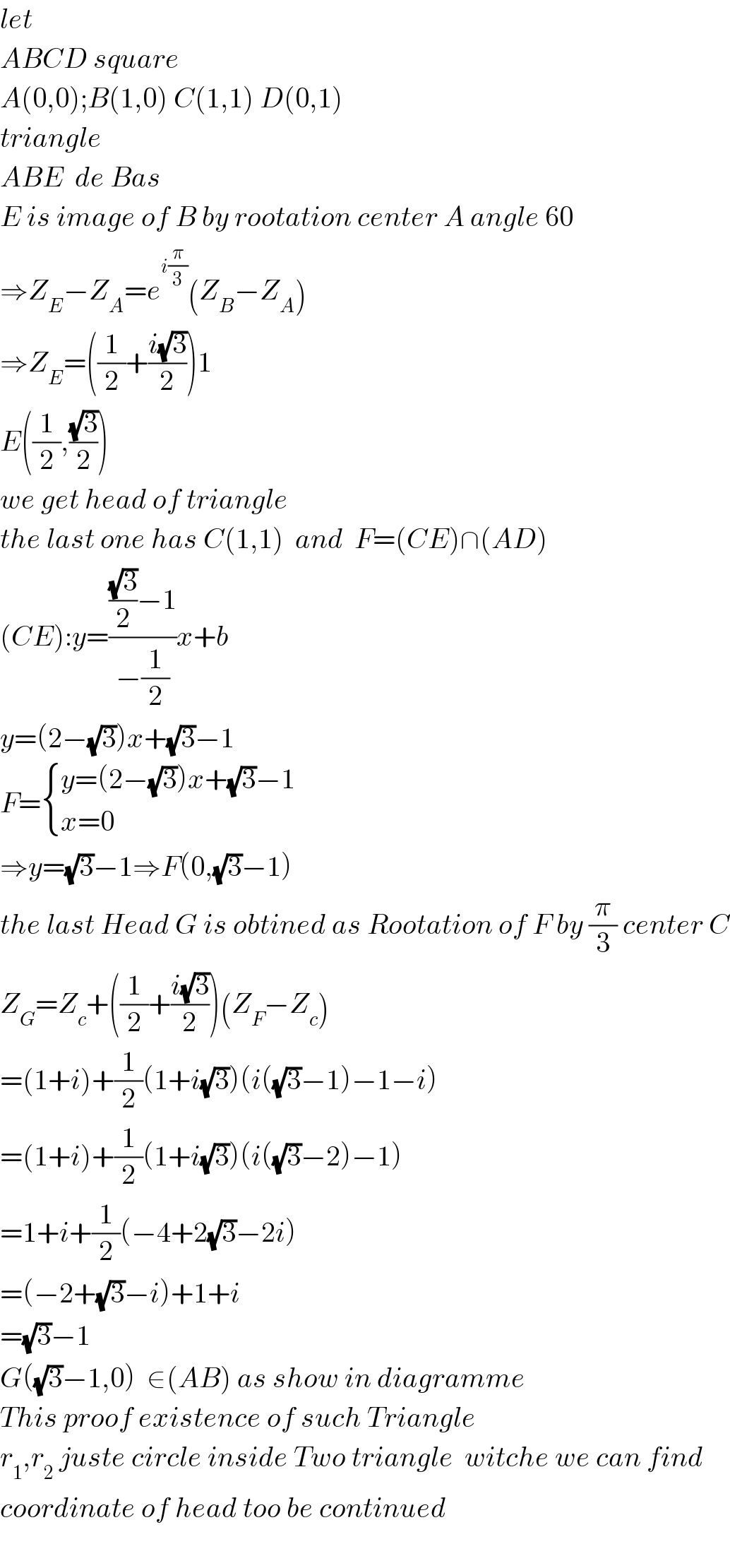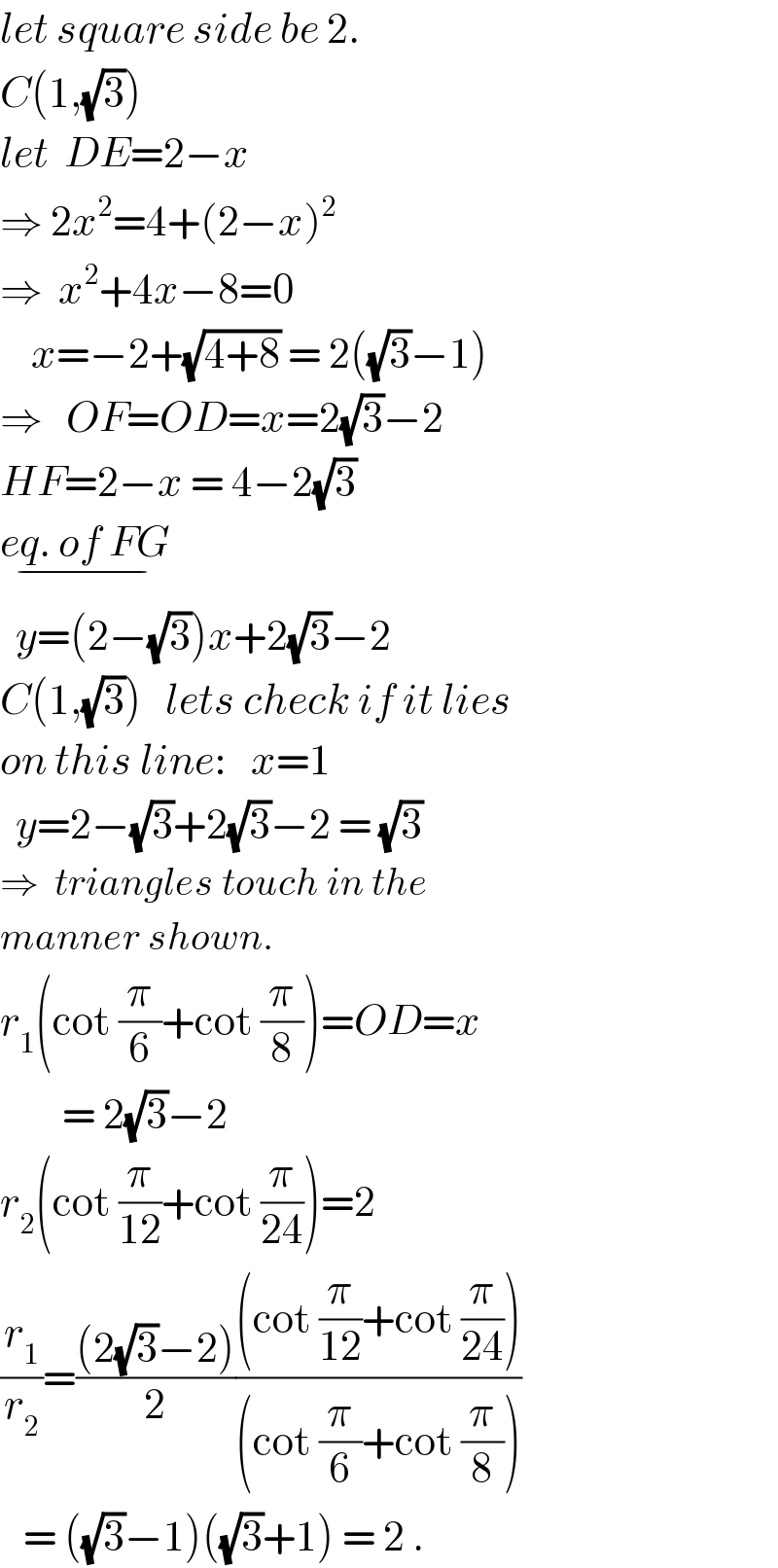
Question and Answers Forum
Question Number 80015 by mr W last updated on 30/Jan/20

Commented by mr W last updated on 30/Jan/20

Commented by jagoll last updated on 30/Jan/20

Answered by mind is power last updated on 30/Jan/20

Answered by ajfour last updated on 30/Jan/20

Commented by ajfour last updated on 30/Jan/20

Commented by mr W last updated on 30/Jan/20

